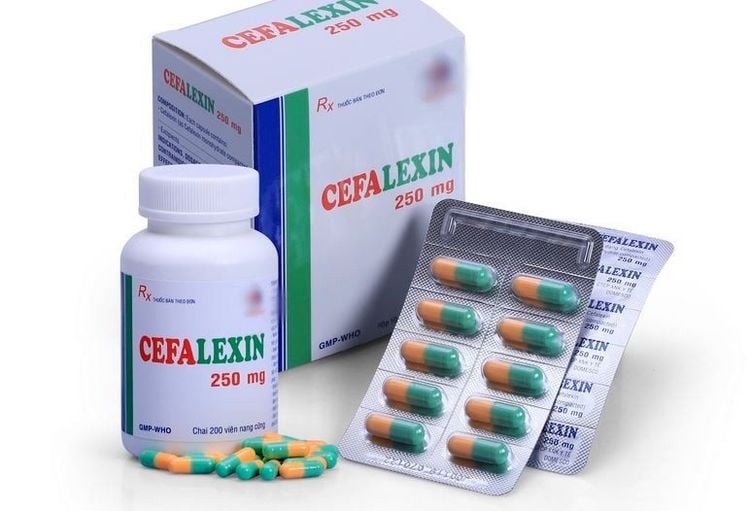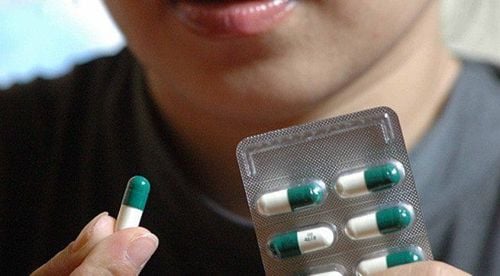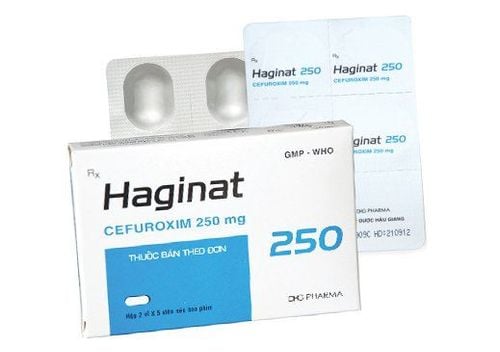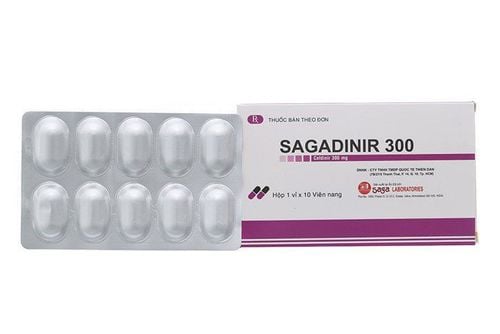This is an automatically translated article.
Cefalexin is a prescription drug that has a bactericidal effect by inhibiting bacterial cell envelope synthesis. This active ingredient has been recorded to be effective against penicillinase-producing Staphylococcus aureus strains resistant to Penicillin or Amoxicillin, some strains such as Escherichia Coli, Proteus mirabilis, Shigella, Klebsiella spp...1. What is Cephalexin?
Cephalexin (also known as Cephalexin) is a first-generation cephalosporin antibiotic for oral administration. The drug is prepared in the form of hard capsules or powdered suspension for oral administration with the strength of 125mg, 250mg, 500mg and 700mg.
So what is Cephalexin medicine? Accordingly, the drug is indicated for the treatment of infections caused by sensitive bacteria:
Respiratory tract infections: infectious bronchiectasis, acute and chronic bronchitis; Ear - nose - throat infections , otitis media , sinusitis , pharyngitis , mastoiditis ; Skin infections, soft tissue infections; Bone and joint infections; Urinary tract infections: Acute prostatitis, cystitis, prophylaxis of recurrent urinary tract infections; Dental infections: Used to replace Penicillin in preventive treatment for heart patients who have to undergo dental treatment; Obstetric and gynecological infections; Gonorrhea (in case of inappropriate use of penicillin).

Cephalexin là thuốc gì? Cephalexin là một loại kháng sinh nhóm Cephalosporin
2. Instructions for using Cefalexin
2.1. Dosage of Cefalexin for adults For adults, the usual dose for 1 day is 1-4g, divided into 3-4 doses. Most infections respond to cefalexin 500 mg every 8 hours; For strep throat, skin and soft tissue infections, and mild uncomplicated urinary tract infections, the usual dose is 250mg every 6 hours or 500mg every 12 hours; If the infection is more severe or with less susceptible organisms, a higher dose may be considered. If doses higher than 4 g/day are needed, the physician may consider using another parenteral cephalosporin antibiotic at a dose appropriate for the patient; For gonorrhea, use Cefalexin with a single dose in combination with Probenecid as prescribed by the doctor; Dosage should also be flexibly adjusted for the elderly and patients with renal impairment. 2.2. Dosage of Cefalexin for children For children, the usual dose is 25-50mg/kg body weight/day, divided into several oral doses. In most cases of bacterial infections, the recommended dose in children is as follows:
Cephalexin 125 mg every 8 hours for children < 5 years old; Cefalexin 250mg every 8 hours for children >5 years old; In severe infections, the dose may be doubled. Dosage for treatment of otitis media can be up to 75-100mg/kg body weight/day, divided into 4 oral doses. Dosage for the treatment of beta-hemolytic streptococcal infections should be maintained for at least 10 days.
2.3. How to take Cephalexin Cephalexin is taken orally, in the form of tablets or powder for suspension. Users need to strictly follow the instructions on the drug label. To maximize the effectiveness of treatment, the treatment period should last from 7-10 days even after the symptoms have disappeared.
If you have any questions during the use of the drug, talk to your doctor or specialist pharmacist.

Cephalexin là thuốc gì? và cách dùng thuốc hiệu quả người bệnh nên hỏi ý kiến bác sĩ
3. Side effects of cefalexin
In some cases, patients may experience some side effects such as:
Common: Mild nausea, abdominal pain, diarrhea, vomiting, indigestion; Uncommon: Rash, urticaria, pruritus, eosinophilia, reversible hepatic transaminase elevation, headache, fatigue, dizziness, anxiety, confusion, hallucinations; Rare: Anaphylaxis, Stevens-Johnson syndrome, erythema multiforme, Quincke's edema, hepatitis, toxic epidermal necrolysis (Lyell's syndrome), thrombocytopenia, neutropenia, dyspepsia chemistry, pseudomembranous colitis, cholestatic jaundice, genital pruritus, vaginitis, reversible interstitial nephritis. If the drug is taken in excess of the recommended dose, the patient may experience symptoms such as: diarrhea, epigastric pain, hematuria, nausea, vomiting;
Go to the emergency room if you see any signs of drug allergy, for example: difficulty breathing, swelling of the face, lips, tongue, throat, rash...
4. Note before using the drug
Do not use Cephalexin for people at risk of hypersensitivity to any component of the drug. Some other subjects also need to be careful when using Cefalexin:
People with severe diarrhea after or while taking antibiotics; Patients with renal failure; People with a history of allergy to Cephalosporin antibiotics, Penicillin or other drugs; Women who are pregnant or breastfeeding. Cephalexin may also cause some urine glucose tests to be false-positive.
5. Drug interactions
Cephalexin can produce interactions with some of the following:
Strong diuretics (ethacrynic acid, furosemide, piretanide); Aminoglycoside antibiotics; Typhoid vaccine; Oral contraceptives; Cholestyramine; Probenecid. The article has provided basic information about the antibiotic Cephalexin, its uses and how to use it. Besides the benefits in treating bacterial infections, your health may also be affected by the use of this medicine. Therefore, talk to your doctor directly for specific advice and support.













